#Al-Batrā
Text
Las 7 Maravillas del Mundo
Muralla China
La Gran Muralla china es una antigua fortificación china,1 construida y reconstruida entre el siglo v a. C. y el siglo xvi para proteger la frontera norte del Imperio chino durante las sucesivas dinastías imperiales de los ataques de los nómadas xiongnu de Mongolia y Manchuria.
Contando sus ramificaciones y construcciones secundarias, se calcula que tiene unos 21 200 km de longitud.
Petra
Petra (en griego antiguo, Πέτρα, en árabe, البتراء, al-Batrā´) es un importante enclave arqueológico en Jordania y la capital del antiguo reino nabateo, cuyos pobladores la llamaban Raqmu (en árabe nabateo: الرقيم).1 El nombre de Petra proviene del griego πέτρα, que significa piedra.
El asentamiento de Petra se localiza en un valle angosto, al este del valle de la Aravá que se extiende desde el mar Muerto hasta el Golfo de Aqaba. Los restos más célebres de Petra son sin duda sus construcciones labradas en la misma roca del valle (hemispeos), en particular, los edificios conocidos como el Khazneh (‘el Tesoro’) y el Deir (‘el Monasterio’).
El Coliseo de Roma
El Coliseo o Anfiteatro Flavio (en latín Colosseum, en italiano Colosseo)1 es un anfiteatro de la época del Imperio romano, construido en el siglo I. Está ubicado en el este del Foro Romano, y fue el más grande de los que se construyeron en el Imperio romano.
Chichen Itza
Chichén Itzá (del maya yucateco: Chiꞌ Chꞌeꞌen Its Jaꞌ ‘Boca del pozo de los brujos del agua’)1 es uno de los principales sitios arqueológicos mayas de la península de Yucatán, en México. Se encuentra a escasos 2.5 km de la localidad de Pisté, en el municipio de Tinum, en el estado de Yucatán, al sureste del país.
Machu Picchu
Machu Picchu (pronunciado /ˈmɐt͡ʃʊ ˈpɪkt͡ʃʊ/ en quechua, «monte viejo») es el nombre contemporáneo que se da a una llacta —antiguo poblado incaico andino— construida antes del Siglo XV, ubicada en la Cordillera Oriental del sur del Perú, en la cadena montañosa de Los Andes a 2430 metros sobre el nivel del mar.
El Cristo Redentor
El Cristo Redentor o Cristo del Corcovado es una estatua art déco que representa a Jesús de Nazaret, con los brazos abiertos, mostrando a la ciudad de Río de Janeiro, Brasil.
La estatua tiene una altura de treinta metros sobre un pedestal de ocho metros.12 Este monumento fue inaugurado el 12 de octubre de 1931 después de aproximadamente 5 años de construcción.
Taj Mahal
El Taj Mahal (hindi: ताज महल Tāj Mahal, urdu: تاج محل Tāŷ Mahal 'Corona de los palacios'; /tɑːʒ mə'hɑl/)12 es un monumento funerario construido entre 1632 y 1654 en la ciudad de Agra, estado de Uttar Pradesh (India), a orillas del río Yamuna, por el emperador musulmán Shah Jahan de la dinastía mogol.
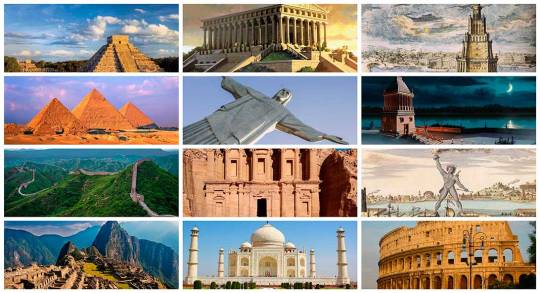
1 note
·
View note
Photo
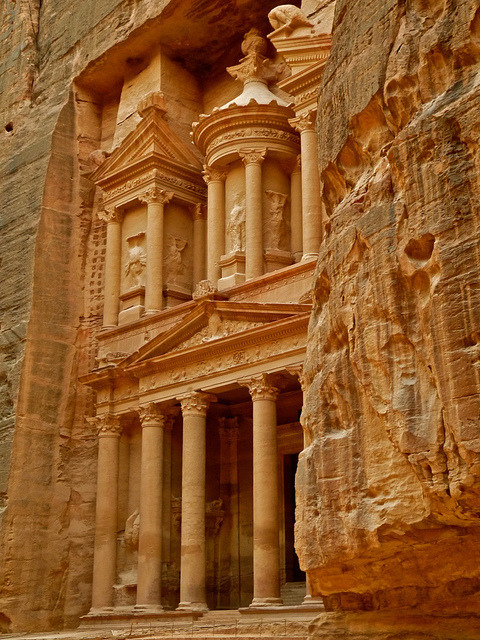
Entrance to the Treasury , a stunning piece of Nabataean architecture in Petra, Jordan
24 notes
·
View notes
Photo
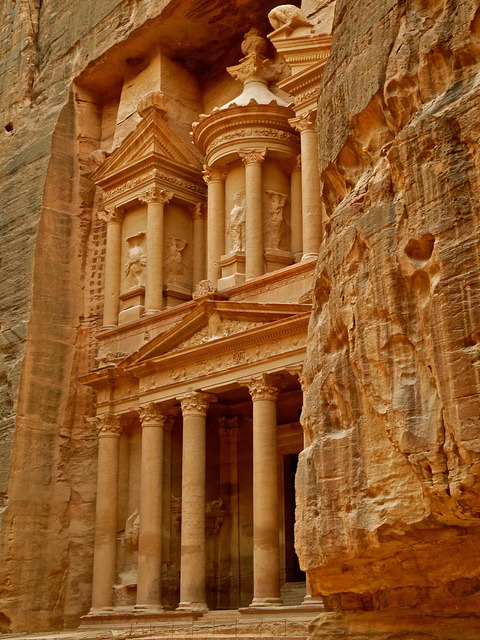
Entrance to the Treasury , a stunning piece of Nabataean architecture in Petra, Jordan
2 notes
·
View notes
Photo

Entrance to the Treasury , a stunning piece of Nabataean architecture in Petra, Jordan
1 note
·
View note
Photo

Entrance to the Treasury , a stunning piece of Nabataean architecture in Petra, Jordan
0 notes
Photo

Entrance to the Treasury , a stunning piece of Nabataean architecture in Petra, Jordan
0 notes
Photo
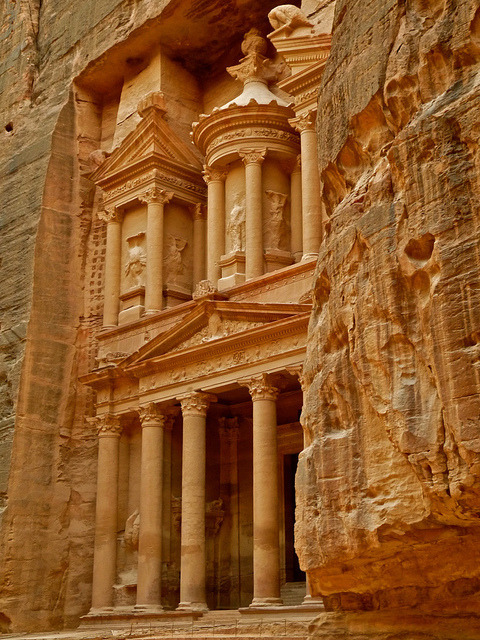
Entrance to the Treasury , a stunning piece of Nabataean architecture in Petra, Jordan
0 notes
Photo

Entrance to the Treasury , a stunning piece of Nabataean architecture in Petra, Jordan
0 notes
Photo
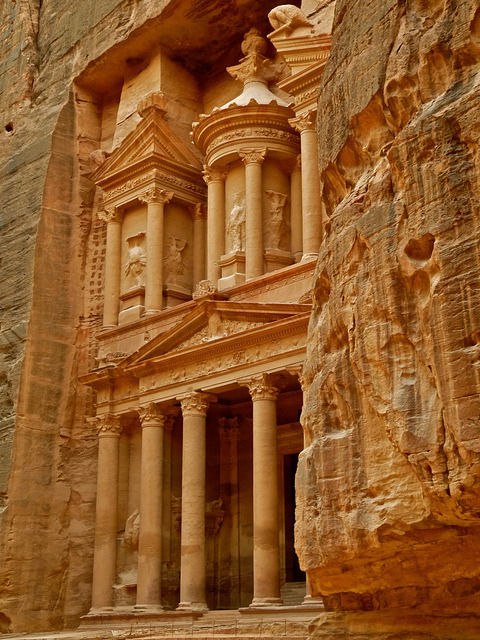
Entrance to the Treasury , a stunning piece of Nabataean architecture in Petra, Jordan
0 notes
Photo

Entrance to the Treasury , a stunning piece of Nabataean architecture in Petra, Jordan
4 notes
·
View notes
Photo
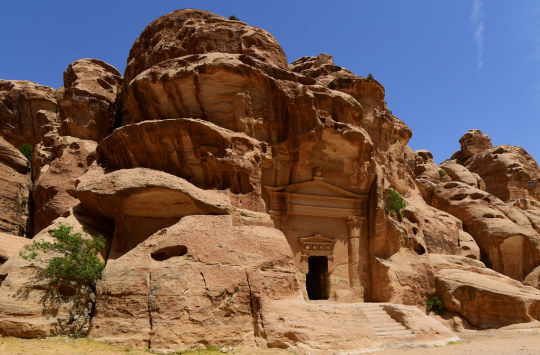
Little Petra, Jordan, 674 by tango- Little Petra (Arabic: البتراء الصغيرة, al-batrā aṣ-ṣaġïra), also known as Siq al-Barid (Arabic: سيق البريد, literally "the cold canyon") is an archaeological site located north of Petra and the town of Wadi Musa in the Ma'an Governorate of Jordan. Like Petra, it is a Nabataean site, with buildings carved into the walls of the sandstone canyons. As its name suggests, it is much smaller, consisting of three wider open areas connected by a 450-metre (1,480 ft) canyon. It is part of the Petra Archeological Park, though accessed separately, and included in Petra's inscription as a UNESCO World Heritage Site.. Like Petra, it was probably built during the height of Nabataean influence during the 1st century C.E. While the purpose of some of the buildings is not clear, archaeologists believe that the whole complex was a suburb of Petra, the Nabatean capital, meant to house visiting traders on the Silk Road. After the decline of the Nabataeans, it fell vacant, used only by Bedouin nomads, for centuries. Along with neighboring Beidha, Little Petra was excavated in the later 20th century by Diana Kirkbride and Brian Byrd. In 2010, a biclinium, or dining room, in one of the caves was discovered to have surviving interior art depicting grapes, vines and putti in great detail with a varied palette, probably in homage to the Greek god Dionysus and the consumption of wine. The 2,000-year-old ceiling frescoes in the Hellenistic style have since been restored. While they are not only the only known example of interior Nabataean figurative painting in situ, they are a very rare large-scale example of Hellenistic painting, considered superior even to similar later Roman paintings at Herculaneum. https://flic.kr/p/2kB1QvD
36 notes
·
View notes